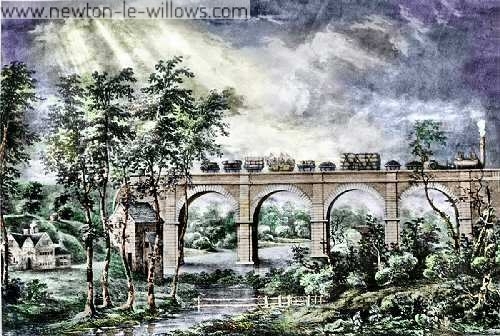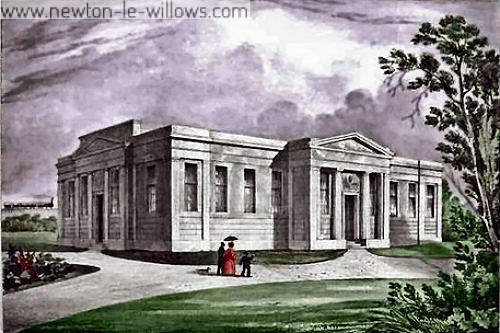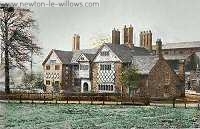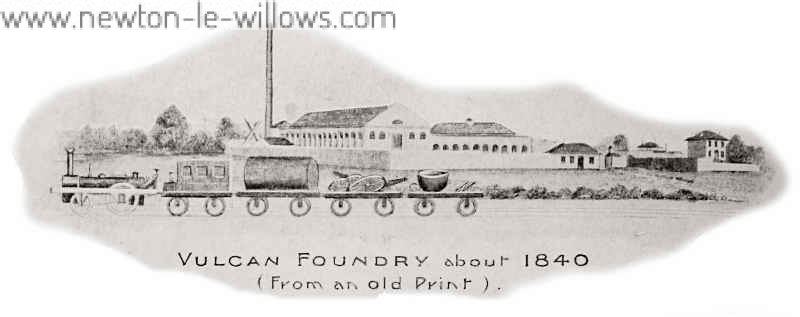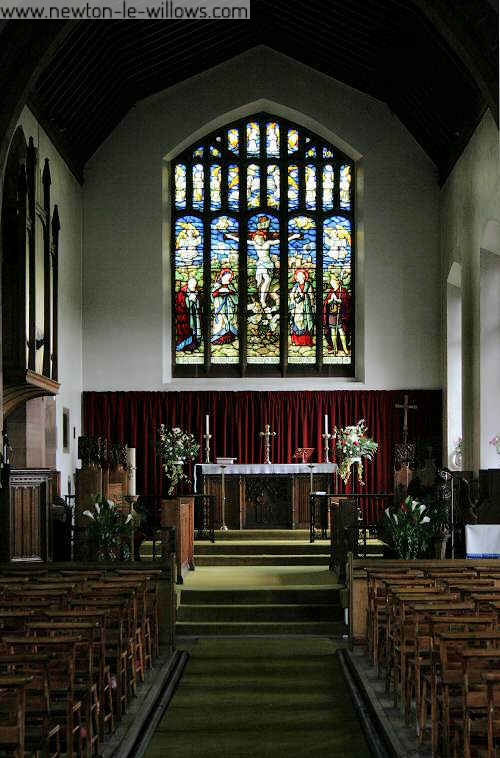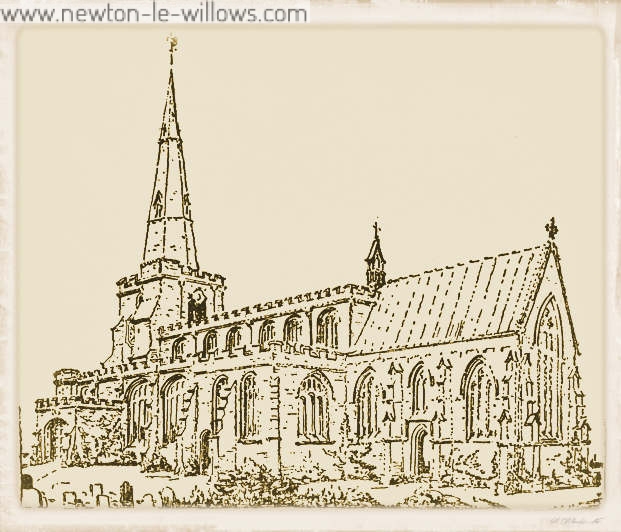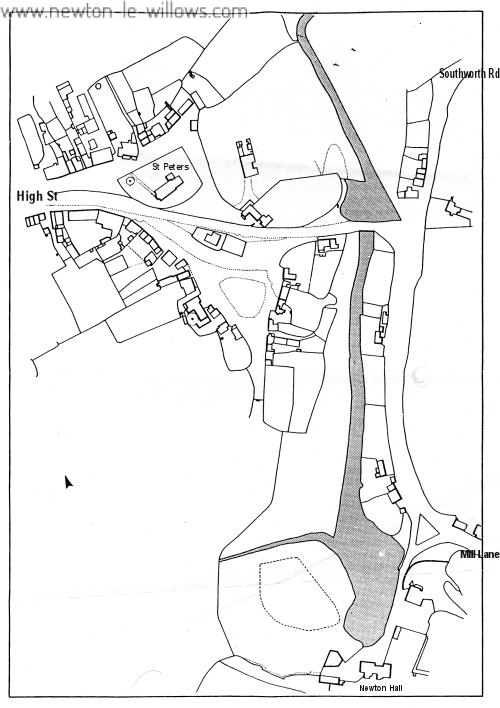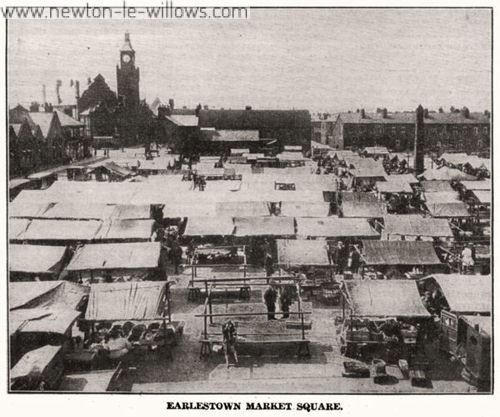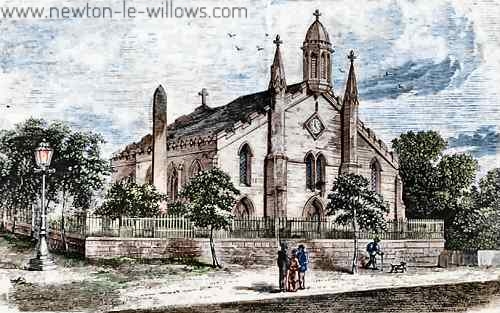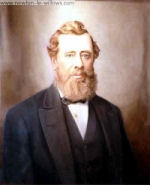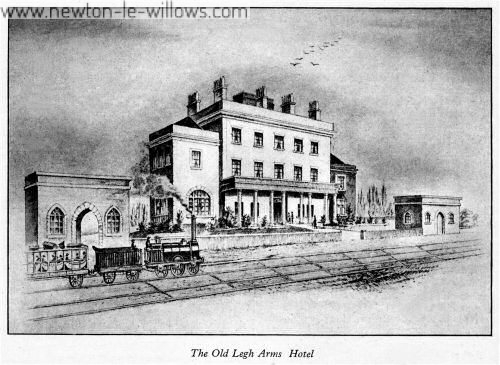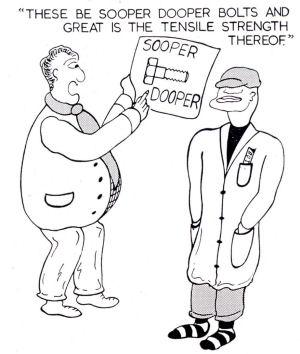To my heart there is no dearer spot upon earth, Than Newton-le-Willows, the place of my birth! Oh! The world has allurements to tempt us to roam, But it cannot supply the endearments of home. Dear Newton! Ill sing of thy sylvan retreats, Of thy lanes, and thy tree-shaded dwellings and streets, Of thy bridge oer the brook with its vista of bloom– A vision of beauty and store of perfume! I will sing of thy ancient, historical hall Near the old ruined mill with its miniature falls The strangers…
Read More >>Category: Local History
South Lancashire Conservative Association
The South Lancashire Conservative Association has scarcely been founded three years, and yet during that short period it has enrolled as members all the talent, wealth, and influence of that portion of the palatinate from whence it takes its name. To perpetuate the society a building for the accommodation of its members has been erected since the last anniversary dinner, which is at once the most prominent object in the town of Newton, and we trust will be a lasting monument of the good old English feeling which raised it.…
Read More >>Newton Hall : Archaeological Excavation
I tried as best I could to get video of Mark Adams giving details of what they had found in their excavation, and some video of Stan & John Boydell explaining the layout and uses of the various buildings; Please remember these clips are not edited at all, i have about 2 hrs of different clips from different days that i managed to visit the site, and I hope that when it’s all put together, I will end up with a little fly on the wall type documentary of the…
Read More >>A history of the Vulcan Foundry
In September, 1830, the Liverpool and Manchester Railway was opened, and to digress, here is a brief account of the ceremony. Being one of the first passenger lines in the country, its development must have had a profound influence on the policy and prosperity of the Vulcan Foundry, and the Locomotive industry as a whole during its early years, apart from its interest to all dwellers in South West Lancashire in its effect on the industrial life of the district. T. & S. Stone. The original stone inscribed T. &…
Read More >>St Peter’s Mission & All Saints Church, Crow Lane
To the Members of the Church of England dwelling at the Earlestown end of the Parish of St. Peter, Newton-in-Makerfield. DEAR FRIENDS, For your benefit we propose to hold. during the coming Winter and Spring, in the large room of the Mill Residence in Fairclough Street, to be entered from the Mill Yard by a new staircase 1. Divine Service every SUNDAY EVENING at 6-30; and also every THURSDAY EVENING at 8 o’clock, for which Prayer Books and Hymn Books will be supplied. 2. Sunday School every SUNDAY AFTERNOON from…
Read More >>St Oswald’s, Winwick Church
A FOREWORD It is with much pleasure that I commend this brief sketch of Winwick Church. To those who, like myself, have had the privilege of loving and living in Winwick, this beautiful Church stands on a little hill apart, not actually only, but ideally, for it possesses the atmosphere that comes from a long succession of devoted men and women whose worship and service have here been concentrated—the atmosphere that only comes where holy things have been loved and tended for many a day. In Mr. Pearce’s sympathetic outline…
Read More >>Newton in 1745
At this period the wages of an agricultural labourer were 10d per day without food, and 5d if his master provided him with meals. Carpenters and masons received ls 6d per day. The wants of the people, however, were few, and food was cheap, and a shilling had greater purchasing power than it has in the present day. In the early part of the 18th century the manufacture of woollens and of silk was encouraged, to the detriment of cottons and calicoes, and made rapid strides. Probably about this time…
Read More >>Earlestown Market 1938
Market successful despite removal Trading centre provided for new town. Prosperous council undertaking at Earlestown Having commenced the story in the middle and glanced at the finish to see the happy ending it would now be appropriate to look at the opening chapter of the story and see how it began. From very remote times Newton-in-Makerfield has held a very important position. It stands on the northern road between Warrington and Wigan and about the same distance from both. In the days when Saxon kings ruled over the island it…
Read More >>Newton-in-Makerfield : yr 1825-35
NEWTON IN MACKERFIELD. NEWTON IN MACKERFIELD is a small Borough Town and Chapelry in the Parish of Winwick, and in the Hundred of West Derby; 5 miles N. of Warrington, and 7 miles S. of Wigan. This Borough contains 275 houses, occupied by 289 families, consisting of 1643 persons. Of these families 56 are employed chiefly in agriculture, 221 in trade,” manufactures, or handicraft, and the remaining 13 are either engaged in professional pursuits or unemployed. The rental of the lands, messuages, and other buildings in the township, according to…
Read More >>The Story of Vicars
Around a year ago, I compiled from different sources a history on one of Earlestowns oldest firms, T & T Vicars, somehow, the article has been lost from the database, probably when the website changed Servers some months ago, for those interested, here again is the missing history article The year 1849 has been generally accepted as the foundation year of the firm of T & T Vicars, but it is possible that the partnership was formed even earlier than this. The story began when Thomas Vicars, son of an…
Read More >>Newton – The Market and Fairs
In 42nd Henry III. (1258), Robert Banastre, the fourth baron of that name, obtained the Kings charter for a fair and market at his manor of Newton . Forty-three years afterwards a market and two fairs were granted by Edward I. to John de Langton – the market to be held every Saturday, and the fairs on the eve,day, and morrow of St. John (6th May) and of St. Germain (31st July). In 1536 the former was described by Leland (King Henry VIII.s antiquary) as “a little poore market.” This…
Read More >>Sites of Interest East of Newton
Sites of Interest to The East on Newton-le-Willows Site number 01 Site name Winwick to Golborne Line NGR SJ 5948 9484 to SJ 5977 9535 Site type Railway Period Post-medieval HER number MHER SJ 5994/16 Designation Sources GMAC 1995; Wardell Armstrong 2001; Ordnance Survey 1893c Description The railway was bnilt in the late nineteenth century to connect the Liverpool and Manchester railway line (Site 02) with the Warrington to Preston route. It first appears on the 1893 Ordnance Survey maps and thereafter on all subsequent Ordnance Survey…
Read More >>McCORQUODALE & CO. LTD. 1846-1937
THE following appeared in a newspaper published in 1846: “The capacious building at Newton, on the north side of the Liverpool and Manchester Railway, known until recently as the “Legh Arms Hotel” is being converted into a general printing office.” A printing office in a village like Newton, however humble in pretension, a year ago would have been considered one of the greatest wonders of the age. Wonders do, however, occasionally appear, and one of the greatest we Know of is the conversion in such a place, of a building…
Read More >>Newton, 1800 & 1834
NEWTON, LANCASHIRE. Newton, commonly called Newton in the Willows, is five miles from Warrington, seven from Wigan, IS from Preston, 45 from Lancaster, and 1SS from London, in the road from Warrington to Wigan. It is an ancient borough by prescription, governed by a steward, bailiff, and burgesses, and returns two members to Parliament. The right of election is supposed to be in the burgesses, though there is no resolution of the House of Commons respecting it. The steward of the lord of the manor and the bailiff are the…
Read More >>The Fable of the Inspector and the Bolts
VULCAN MAGAZINE , Autumn 1958 THE FABLE OF THE INSPECTOR AND THE BOLTS There dwelt in the City of Newt an Inspector of a Factory, and his Chief spake unto him saying:- “Lo, there is in the wilderness of Vul a maker of bolts, and he has made two score and five special bolts. These be Sooper-Dooper bolts and great is the tensile strength thereof, that they may fix, even the very top of a cylinder casing, even unto the very bottom. Get thee hence and inspect them. And take…
Read More >>